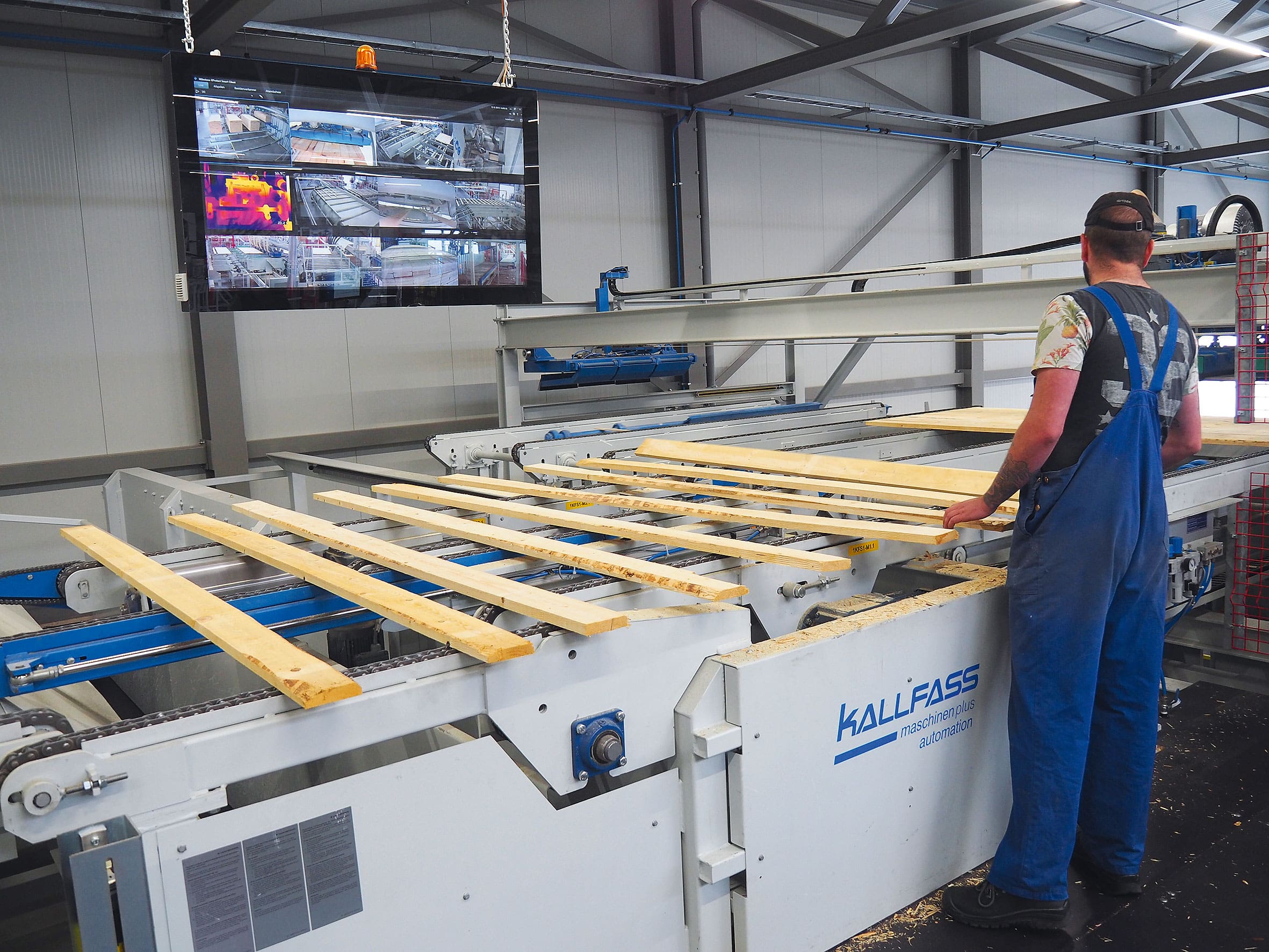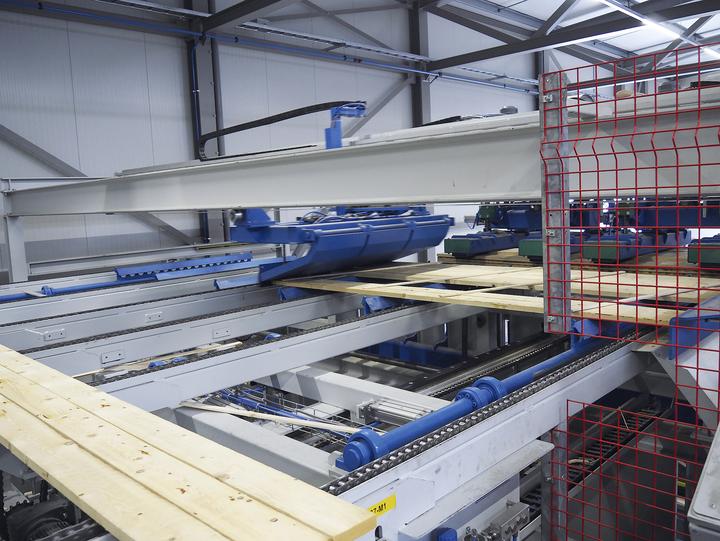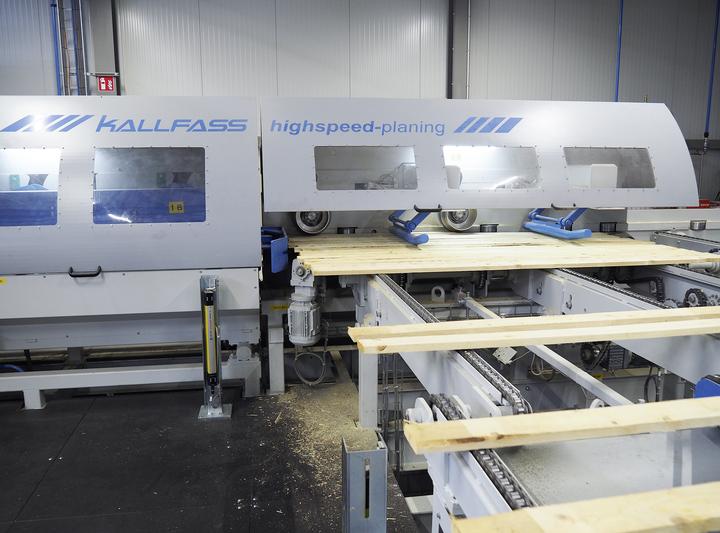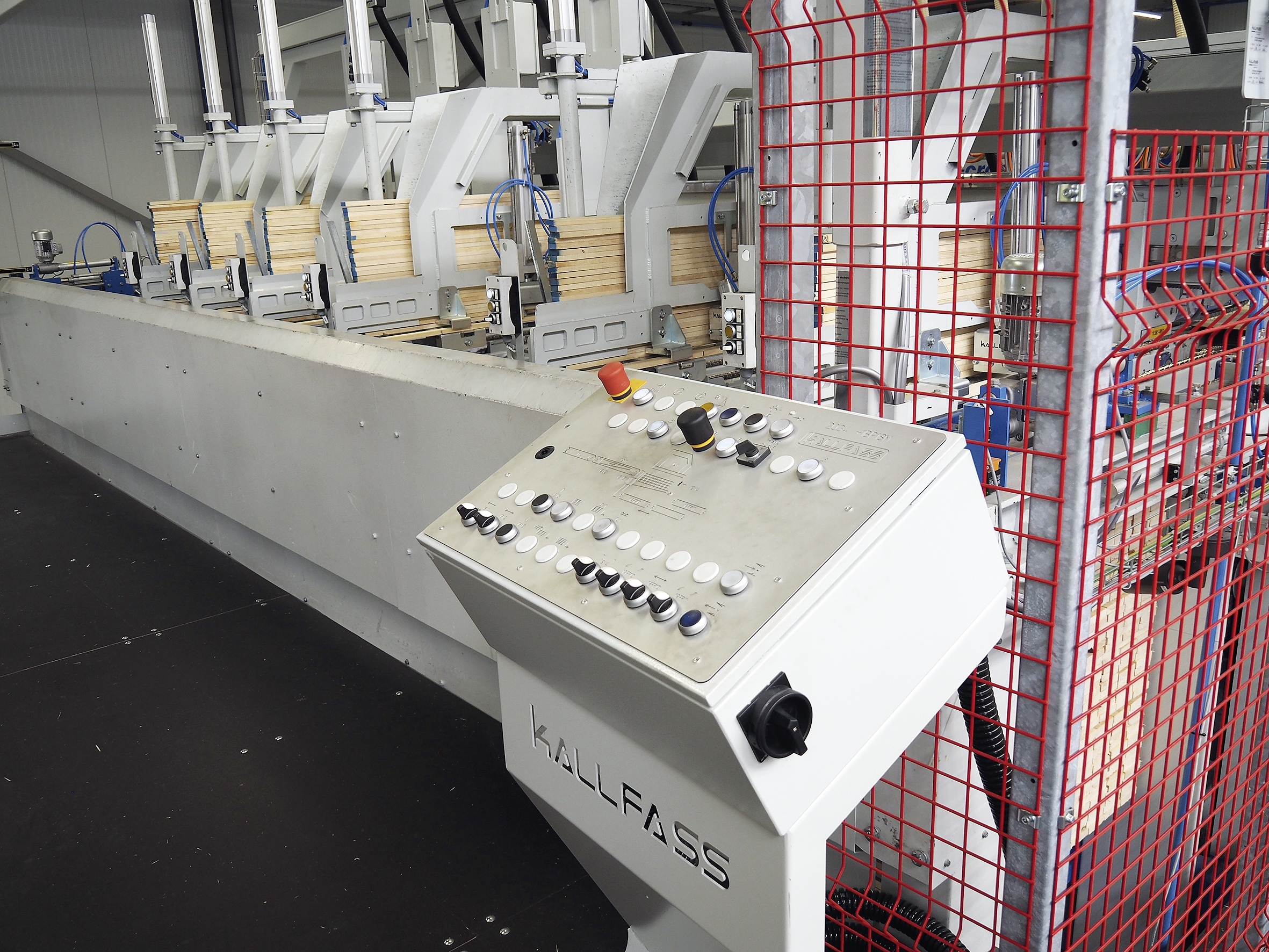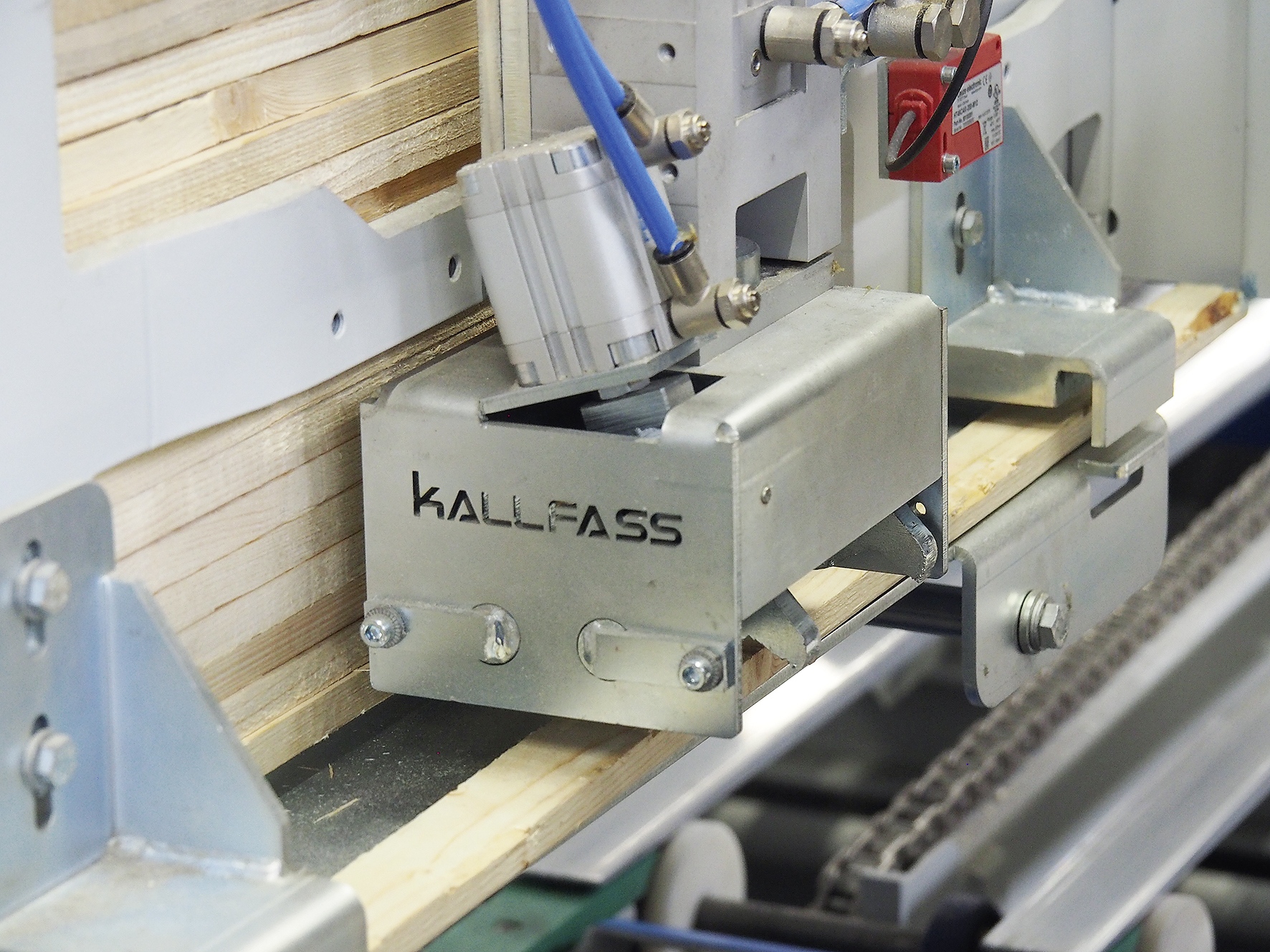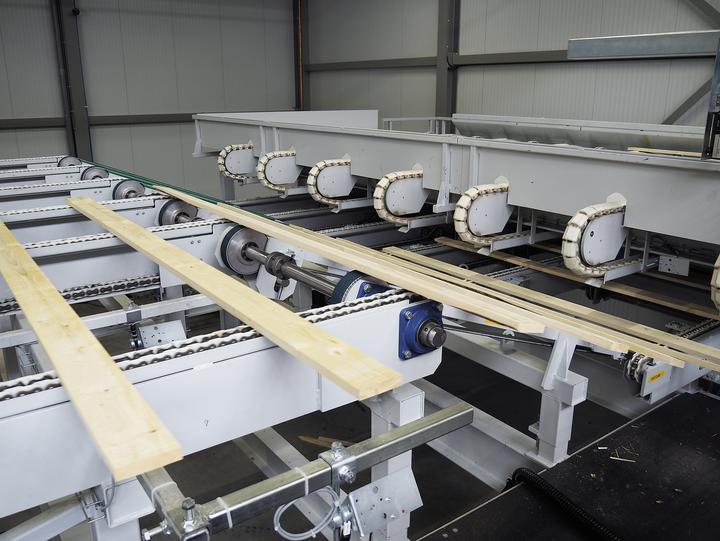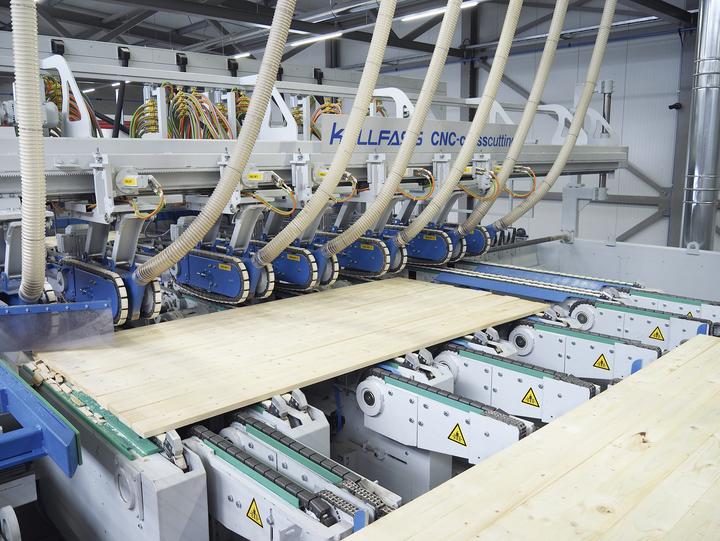New planing line ensures high quality
PKF Post produces almost six million pallets at two locations in the Netherlands, all of which are special formats. The company invested in a mechanised planing machine from Kallfass in 2017 for its northern Finsterwolde location. Based on the positive experience gained with this plant, a decision was reached to implement a similar project in Venlo.
PKF Post primarily supplies the paper, food and chemical industry with its special pallets. However, anybody who associates pallets with poor timber quality should think again. Pallets also need to meet continually stricter requirements, with customers demanding absolute dimensional precision and equally clean timber quality. PKF Post invested in a new and completely mechanised planing line at the Venlo/NL location to meet these demands and increase both efficiency and output. “Stacking around the planing machine had been extremely complicated previously, which is why we decided to purchase a new plant”, says Project Manager Erwin de Jong. Finsterwolde personnel also noted that planed boards reduced the occurrence of disruptions during pallet production. The positive cooperation that developed during conversion work at Finsterwolde two years ago encouraged PKF Post to once again choose a mechanised solution from Kallfass in Baiersbronn-Klosterreichenbach, Germany. The new Kallfass plant and a planing machine (the same as in Finsterwolde) have been in operation in Venlo since March.
PKF Post manufactures up to 12,000 pallets each day in Venlo – some of which involve an order quantity of 1. Data for pallet production and the Kallfass systems is obtained from the work scheduling department. “Control is completely automatic, with personnel in production fulfilling more or less a monitoring function and only intervening in the process when necessary”, explains de Jong. “PKF Post controls the entire plant through a PC interface. The link from work scheduling to the planing machine worked perfectly”, says Kallfass Director Hans Haist. The pallet program in work scheduling automatically calculates parts lists and dimensions required for each order. The system then generates a recommendation regarding the packages to be produced based on timber stock lists.
The new Kallfass mechanisation system starts with an infeed station which can accommodate several timber packages. The system is designed for infeed lengths of 2 to 6 m. Cross sections range from 16 x 75 mm to 22 x 150 mm. Destacking of layers is realised with a vacuum lifter. According to Hans Haist, output is seven to eight layers per minute. A scanner on the cross chain conveyor determines whether there are any battens on the respective timber layer. “This means the strip brush only moves over the position when necessary, and we can maintain a high output”, explains Haist.
